Saturday marks the first Leap Day since 2016, and Feb. 29 has brought extreme weather to many areas of the United States even though it only occurs once every four years.
From blistering heat to bitter cold, heavy rain to heavy snow, even tornado outbreaks, we’ve seen a little bit of everything on Leap Day.
Dr. Brian Brettschneider, a climatologist at the University of Alaska Fairbanks, composed a series of tweets highlighting the most extreme weather on Feb. 29. Here are some of the most notable extremes he found:
The coldest temperature ever measured anywhere in the U.S. was minus 66 degrees in Hughes, Alaska, in 1956.
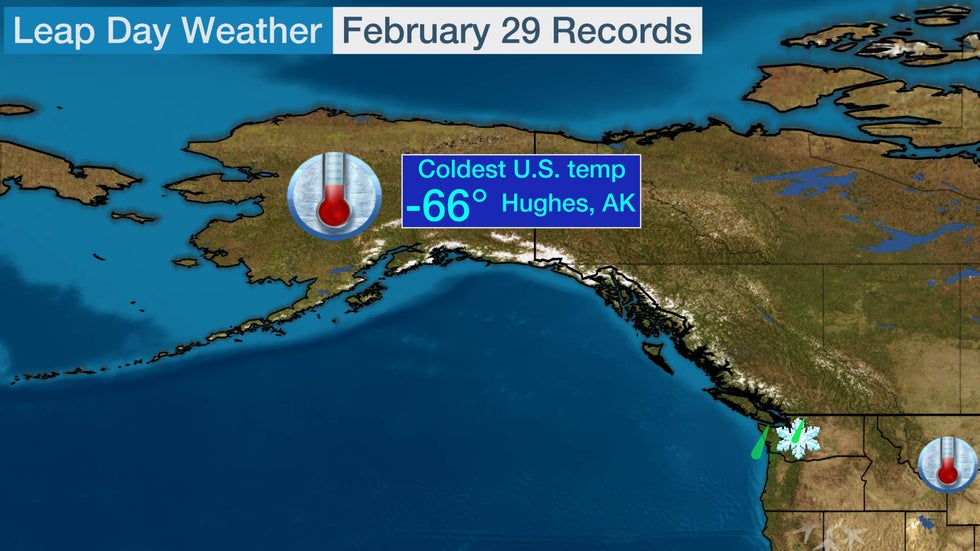
The coldest temperature recorded in the Lower 48 was minus 42 degrees in West Yellowstone, Montana, in 1960. However, Brettschneider noted there is a “very improbable” report of minus 44 degrees in Steele, North Dakota, from 1896.
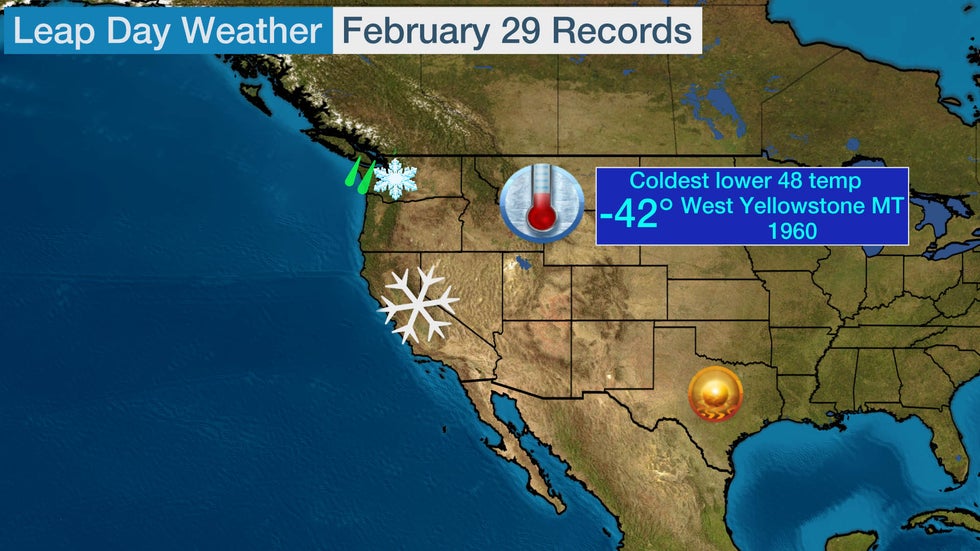
The only 100-plus-degree temperatures were in Texas. Encinal, Mission and Weslaco, Texas, had highs of 100 or 101 degrees in 1940.
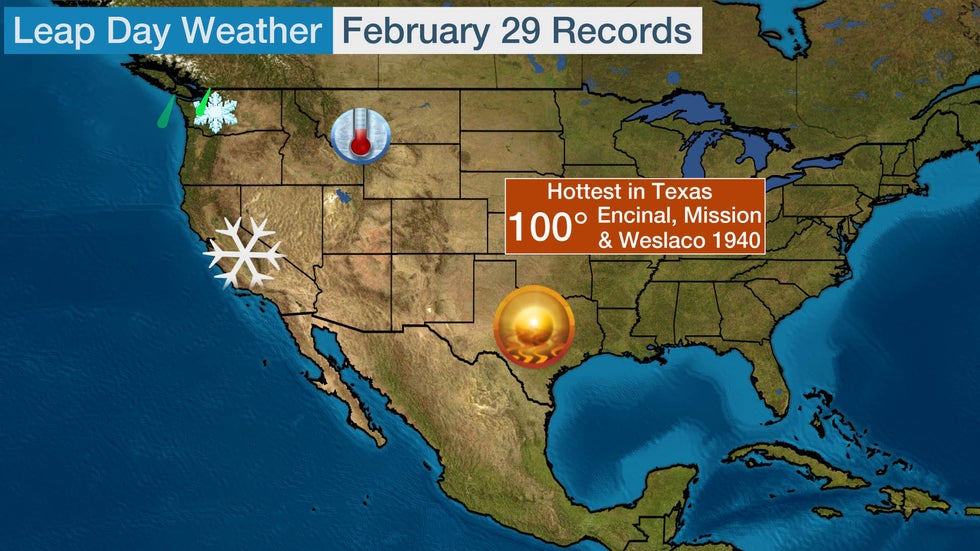
The heaviest snowstorm dumped more than 2 feet of snow in parts of the Sierra Nevada of California and Nevada in 1944. The top snow total from that storm was 33 inches at Cisco Ranger Station, California.
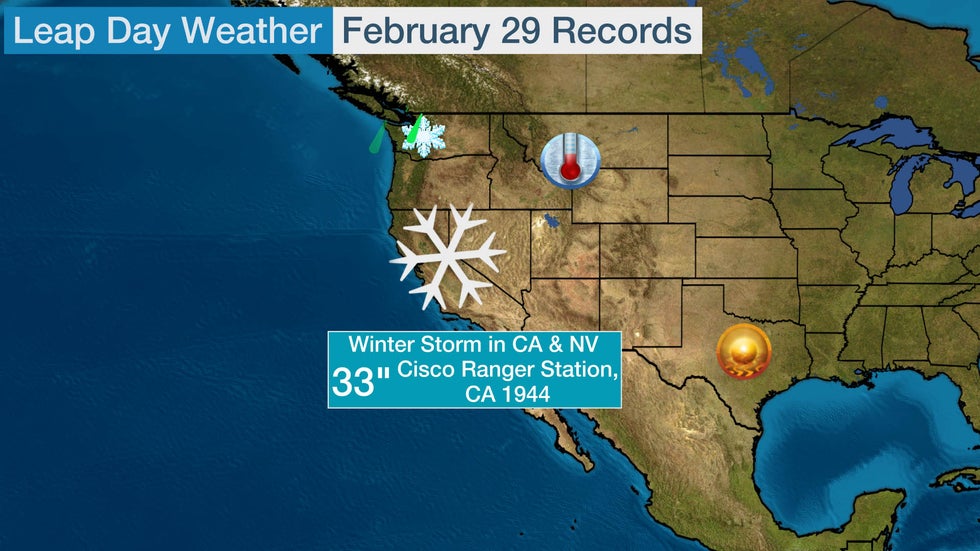
Outside of the Sierra Nevada, the biggest snowfalls were 21.8 inches in Lander, Wyoming, in 2004; 21 inches in Wardsboro, Vermont, in 1948; and 21 inches in Eklutna Plant, Alaska, in 1992.
Subzero temperatures have been reported in 33 U.S. states.
Hawaii has recorded 10-plus inches of rain on eight separate Leap Days. The wettest was 1984, when Puohokamoa, Hawaii, received 21 inches of rainfall. On the following Leap Day in 1988, the same location measured 10.6 inches of rain.
Outside of Hawaii, the greatest precipitation total was 6.28 inches in Sappho, Washington, in 1964.
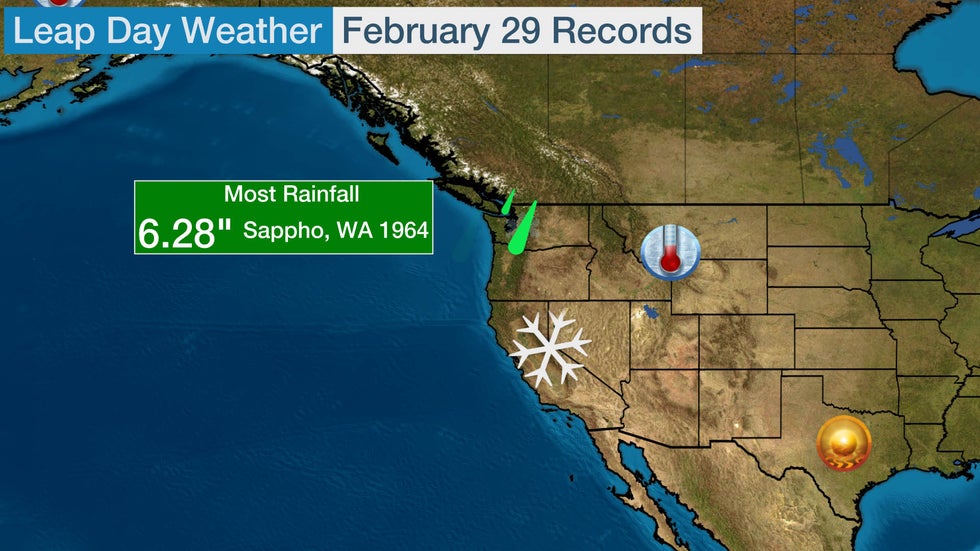
The deepest snowpack has always been in the Cascades and Sierra Nevada. Mount Rainier Paradise Ranger Station in Washington had 265 inches – 22 feet – of snow on the ground in 1972.
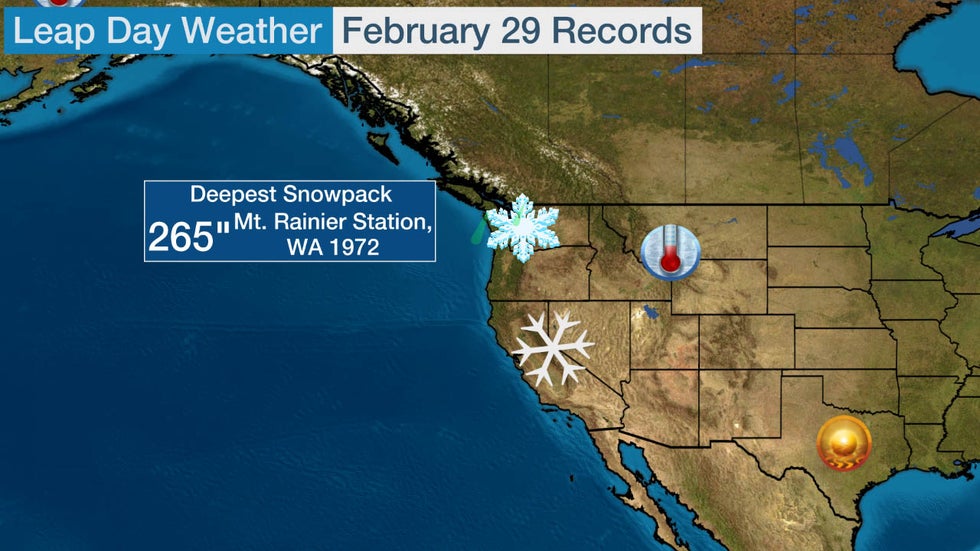
The warmest Leap Days were in 1932 and 1972.
The coldest Leap Days were in 1960 and 1996.
The most widespread area of cold temperatures was in 1960 in the Rockies, as well as in 1980 in the Northern Plains.
“The state with the best weather on Feb. 29 is Alaska,” Brettschneider joked in the final tweet in his series (he lives there).
Not to be forgotten from eight years ago, Leap Day 2012 landed in the midst of a late-winter tornado outbreak stretching from Nebraska to East Tennessee.
The so-called Leap Day tornado outbreak actually began the previous day, when two EF0 tornadoes struck North Platte, Nebraska.
Another 42 tornadoes ripped through parts of states from Kansas and Missouri to Kentucky and Tennessee on Feb. 28-29, 2012, claiming 15 lives and damaging or destroying hundreds of homes and businesses.
The most violent and deadliest twister in the outbreak was an EF4, packing estimated winds up to 170 mph, which tore through Harrisburg, Illinois, killing eight and damaging or destroying over 200 homes.
 St. Joseph's Catholic Church in Ridgway, Illinois, was in ruins March 1, 2012. A pre-dawn twister flattened entire blocks of homes as violent storms ravaged the Midwest and South.
St. Joseph's Catholic Church in Ridgway, Illinois, was in ruins March 1, 2012. A pre-dawn twister flattened entire blocks of homes as violent storms ravaged the Midwest and South.
The Feb. 29, 2012, outbreak had the most tornadoes of any Leap Day on record.
However, Leap Day 1952 was another deadly day. There were eight tornadoes, the strongest rated F4 with a total of five fatalities and 336 injuries, according to Dr. Greg Forbes, former severe weather expert at The Weather Channel.
Leap Day 2020 Forecast
No extreme weather is predicted for Leap Day 2020.
Temperatures will be far above average in parts of the West, Rockies and Plains, and several daily record-warm low temperatures are possible. Highs in the Plains could be as much as 30 degrees above average, including in Kansas, and perhaps, Nebraska where highs could get into the 70s.
Near- or slightly below-average temperatures are expected in much of the East. The Pacific Northwest is forecast to have temperatures close to average.
Rain and mountain snow showers are possible in the Pacific Northwest, Northern California and northern Rockies. A few lingering snow showers are also possible southeast of lakes Erie and Ontario in western and central New York and northwestern Pennsylvania. Gusty winds are expected to develop in parts of the West and Plains.
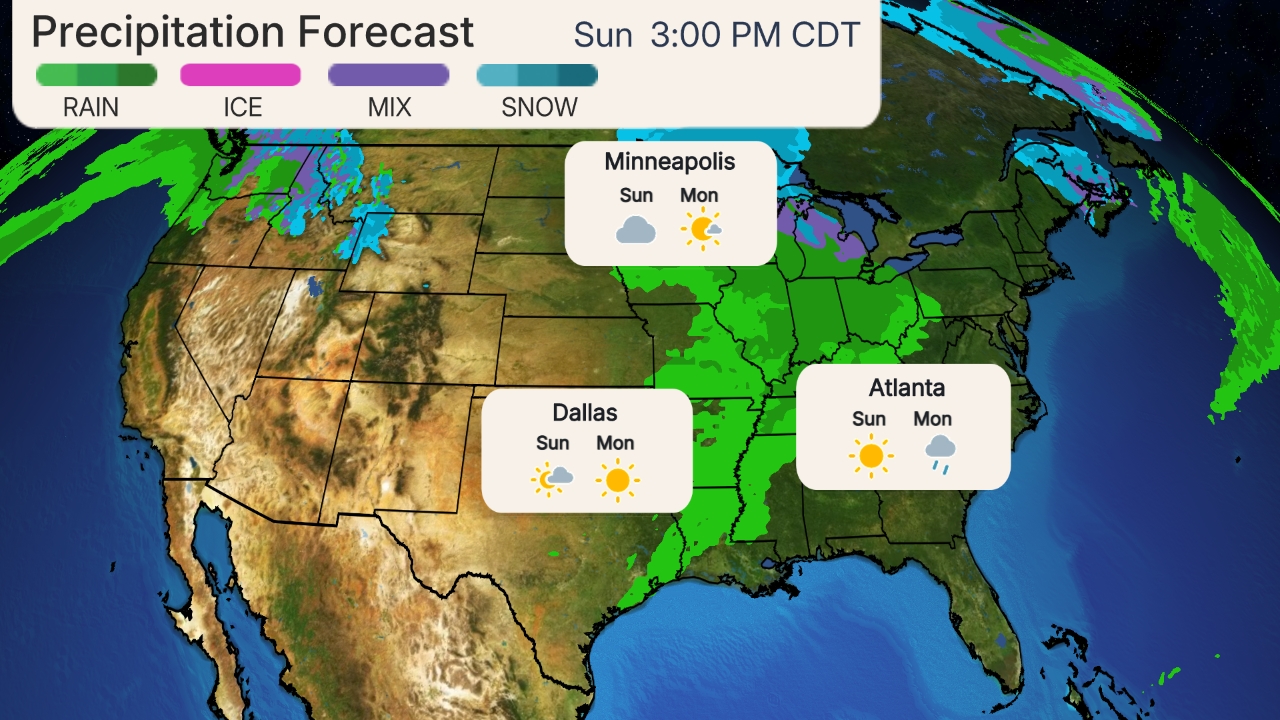 Saturday's Forecast
Saturday's Forecast
The Weather Company’s primary journalistic mission is to report on breaking weather news, the environment and the importance of science to our lives. This story does not necessarily represent the position of our parent company, IBM.
The Weather Company’s primary journalistic mission is to report on breaking weather news, the environment and the importance of science to our lives. This story does not necessarily represent the position of our parent company, IBM.

No comments:
Post a Comment